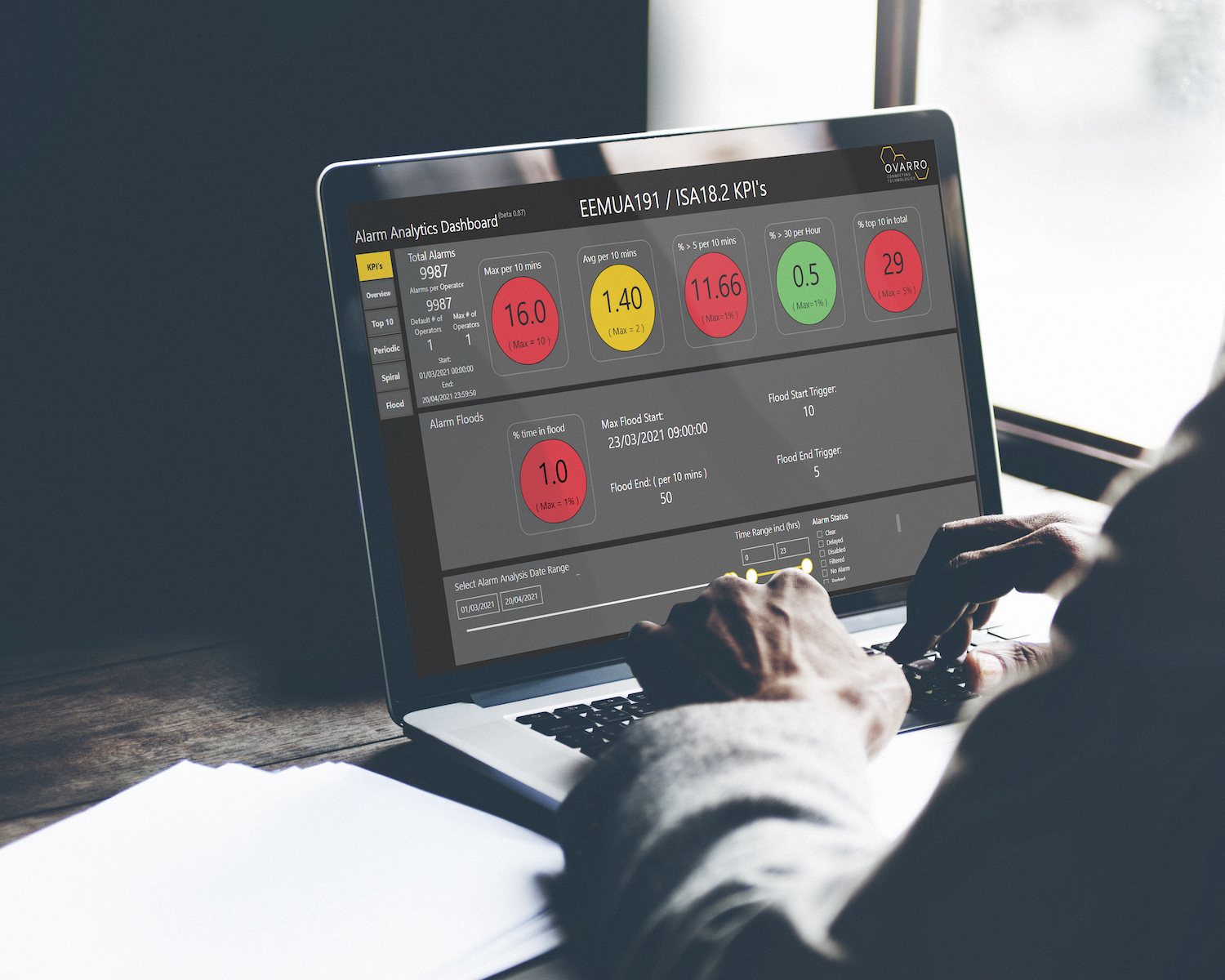Water company telemetry systems generate thousands of alarms each day, with the risk of control rooms becoming overwhelmed and missing critical alerts ever present. Applied correctly, data and analytics can filter out the noise, according to Ovarro, Chief Technology Officer, Matthew Hawkridge.
With the expectation on water companies to become more proactive in their network management, failure to act on the stream of data coming into control rooms and align with recognised industry standards can have far reaching consequences.
Control rooms are a 24/7 central point for water and wastewater operational information, and the hub for incident and crisis management. UK water utilities receive between 40-60,000 alarms from SCADA systems per quarter, on average. During a major event such as a storm, this can be significantly higher.
If an alarm is not actioned and subsequently leads to an event, such as pollution or a tap water quality issue, there could be serious penalties from regulators, impacting on targets, performance league tables and customer satisfaction, and potentially leading to fines or prosecutions.
In March 2021, Defra announced plans to bring in legislation to reduce sewage discharges by water companies into rivers. This adds to the mounting pressure already on water companies, including an Environment Agency expectation for zero pollution events and stretching Ofwat targets for supply interruptions, bursts, leakage and sewer flooding in AMP7 (asset management period 2020-25).
The need to embed data-driven technology into business-as-usual practices is well recognised, with Ofwat in December 2020 reporting “there is scope for water companies to deliver increased productivity and efficiency by taking advantage of Big Data and technological improvements”. But while some companies are making steady progress in achieving proactive network management, the rising pressures on control rooms confirms the need for better management of alarm systems.
Collaborative workshops with UK utilities have resulted in AlarmVision, a new cloud-based, real-time dashboard, which aligns to recognised global alarm management standards, the Engineering Equipment & Materials Users Association guidance (EEMUA191) and the International Society of Automation standard (ISA18.2).
Client feedback shaped the functionality of AlarmVision, which provides teams with situational awareness to effectively manage telemetry alarms. The software analyses the stream of alarms that come from a customer’s telemetry system.
Dashboards give a measure of control over alarms, based on key performance indicators EEMUA191 and ISA18.2 and allow action to be taken to help operators maintain or gain control. The ability to gain real-time or backwards-looking analysis of how the control room is operating against both standards gives insight into whether the control room is at risk of missing critical alarms.
Operators can also identify the root cause of the largest proportion of alarms being generated on their system – for example, a faulty pump at a site could be causing 10% of total alarms on a given day. This gives water companies and municipalities insight that they can action to prioritise resources, reduce the number of alarms, and understand pattern analysis on when these alarms are occurring.
The alarm history from the customer system is mirrored in the AlarmVision cloud platform and results are presented in a real-time, enabling proactive action where necessary. It also shows clearly whether works scheduling matches alarm activity and provides a way to identify most frequent alarms and those that are troublesome. Analysing data to understand which recurring alarms are taking up valuable operator time means the root cause can be fixed and the problem alarm removed.
AlarmVision signals a new direction for Ovarro and reflects the changing needs of water companies globally, as they transition to meet unprecedented challenges arising from climate change, more intense weather events and population growth. Now is the time for the sector to fully harness the technology and the data that is available to meet these demands.
Do you have an article to share? Click here to submit. If you’d like to subscribe to our weekly newsletter, click here.







